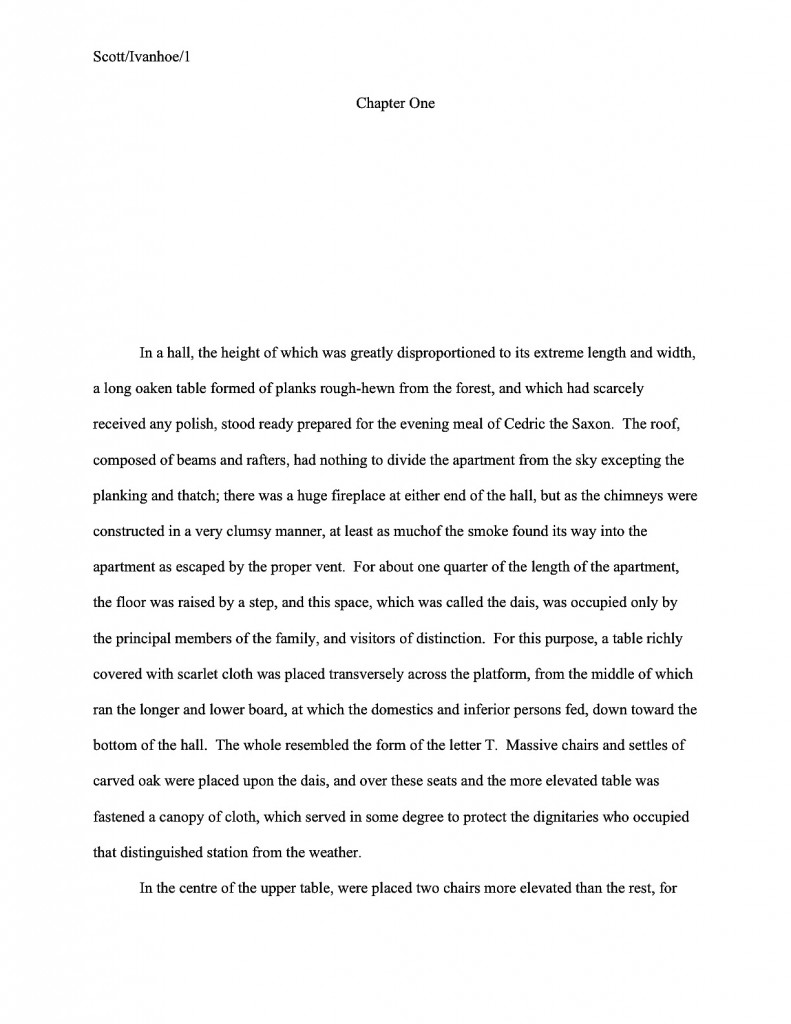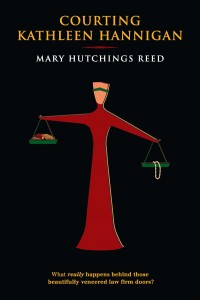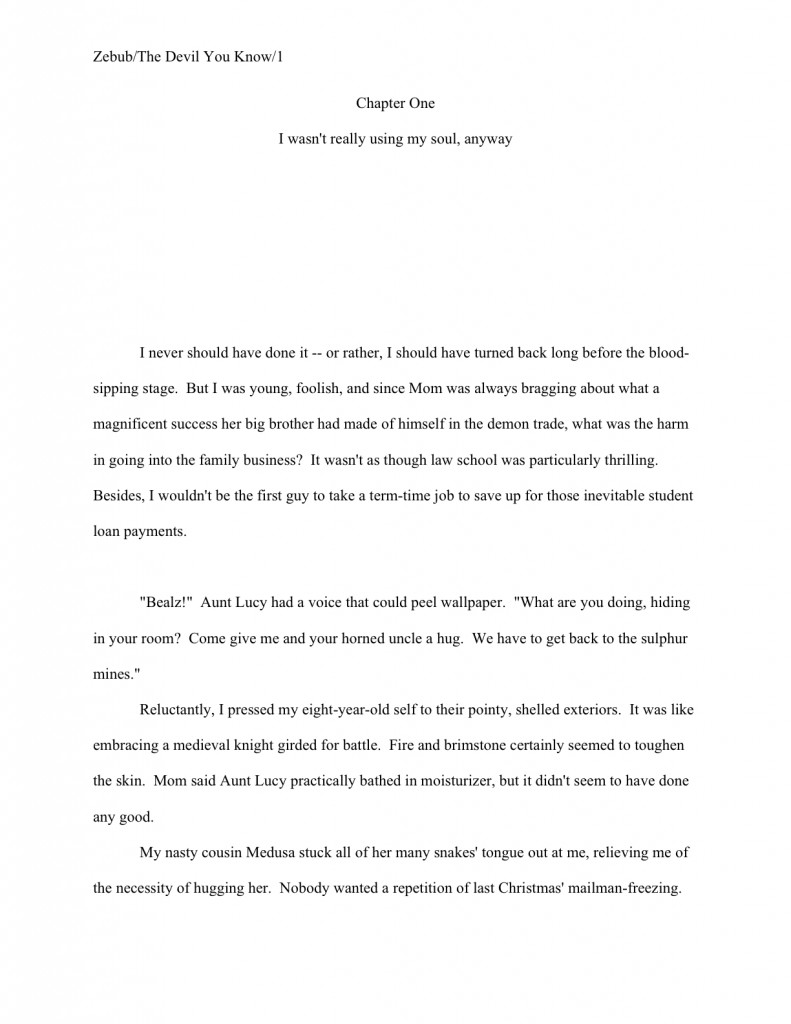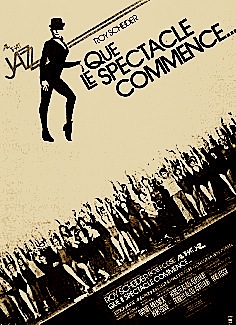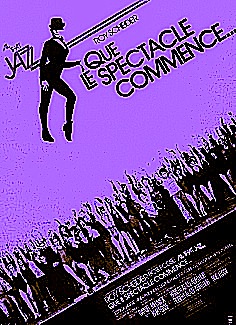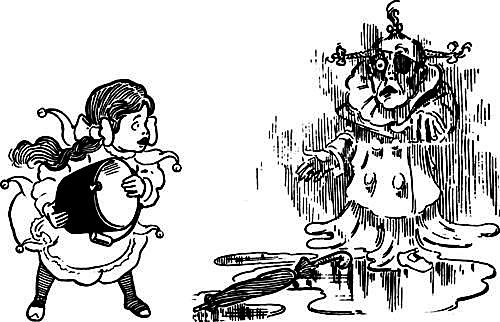
It’s certainly been a year — and a decade — of mixed blessings, hasn’t it? Why, only last month, as I was noting with annoyance that Publishers’ Weekly’s list of the top 100 new releases of 2009 did not contain a single book by a female author, I realized with a shock that the Matthew Crawford at #8 used to sit next to me in grad school seminars. Naturally, I rushed out and bought Shop Class as Soulcraft at a brick-and-mortar bookstore right away, on general principle and to boost my writerly karma, but it made me think: the dark, dark clouds of the last year have certainly had some odd silver linings.
So, belatedly: congratulations, Matt. And here’s to finding writers I like on 10-best lists, anywhere, anytime.
I’ve been mulling over those unexpected flashes of silver in the sky all month, as I’ve been gearing up to this, my last post of the decade. I had planned to come up with one of those ubiquitous best and worst lists from a writerly perspective — you know, books I hated, editors at Random House I was sorry to see take early retirement, that sort of thing.
Frankly, coming up with a worst list was no problem at all. Took about four minutes. Yet every single one of my hard-found bests — all seven of them — were charming surprises like seeing Matt’s name turn up on the PW list, not genuine trends I could laud as harbingers of good things coming to writers everywhere. And while I could follow the excellent example of other end-of-the-decade commenters like Julianna Baggott (whose recent Washington Post article on why it is so hard for female authors to crack those top ten lists is well worth reading, by the way), devoting my last post of the year purely to criticism of the status quo, I just can’t bring myself to believe that those silver linings, however few and far between, are not something worth celebrating.
But let’s not kid ourselves: we writers have a heck of a lot to complain about these days.
So here’s what I’m going to do. First, I’ll be taking a barefoot run through what I think are the ten worst things to happen to writing over the last decade, followed by what I consider the single nastiest development for aspiring writers. Then, with all of that out of our collective system, I’ll let you in on some reasons that I think all of us should continue keeping the faith.
With me? Tremendous. Let the snarly bits begin.
The Ten Worst Things to Happen to Writing in the 2000s So Far
(10) Benefit-free simplification of the language
You know what I’m talking about, right? We’ve all picked up a newspaper — remember those? — and been knocked out of an otherwise interesting article by , say, the completely gratuitous capitalization of the first word following a colon. It’s never been correct in English — so why the heck has it suddenly become so very common in recent years? Why, in fact, has it become acceptable by AP editing standards?
For heaven’s sake, it’s not a new sentence!
Okay, so maybe that’s not the type of irritant that makes folks who don’t read or write manuscripts for a living choke on their coffee, but I assure you, such creeping attacks on literacy drive those of us who do absolutely nuts. Why? Because after enough readers have seen the incorrect version often enough and in authoritative enough sources, it will begin to look correct to them.
Can the fall of civilization be far behind?
No, but seriously, the last decade has seen the dubious legitimization of quite a lot of technically incorrect practices. More nails on the proverbial blackboard:
* The use of quality as a synonym for high-quality, without the necessary modifier. Technically, quality could be high, low, or middling. The sole exception, as far as I know, is when it refers to obsolete social class distinctions: it was obvious from her bearing that she was a lady of quality.
See? I didn’t capitalize the first word after the colon in that last sentence, and the grammar gods didn’t strike me dead on the spot.
* The use of unique with a modifier, as in she is very unique. By definition, something is unique because it is the only one of its kind.
* Leaving question marks off sentences that are clearly questions, as in do you hear me. It’s a lame writer’s trick, intended to convey flatness of tone. If only the language contained some sort of descriptors for sound, so the reader could know how a speaker’s voice sounds…oh, wait, it does.
Nit-picky? You bet. But since when did wielding the language correctly become optional for good writers?
(9) Conspiracy theories whose individual elements can be adequately exposed within a three-page scene.
I’m looking at you, Dan Brown. Just once, couldn’t a necessary clue not be instantly recognizable the second our hero stumbles upon it? Followed, perhaps, by that crusty old character who has held his tongue for the past forty-three years not blurting out everything he knows the instant the protagonist happens to ask? Or sometimes even before he asks?
Call me a complexity-monger, but if a long-unsolved mystery can be revealed to the first yahoo who bothers to glance in its direction, and that within the first four minutes, I’m just not interested. I have too much faith in the inventive capacities of mystery writers to settle for boneheaded plot twists.
(8) Single spaces after periods and colons in manuscripts.
Yes, yes, I know: eliminating these necessary spaces in published books saves a lot of paper and ink. In a manuscript, however, omitting these spaces is not only an offense to the rules of punctuation, but renders text significantly harder to edit by hand.
Which, in case you’d been wondering, is generally the only way to catch the kind of errors mentioned in (10). And why it’s so obvious to most professional readers handed a manuscript without the necessary two spaces that the writer has not worked with an editor before.
(7) A radical increase in pop culture references in published books.
Now, there’s nothing wrong with this in, say, a memoir: mentioning that the protagonist’s sister is lying on the floor, watching a brand-new Gilligan’s Island episode is a legitimate way to give a sense of place and time to a scene. But using current pop references in a novel to make it seem up-to-date now will simply render it out of date in five years.
Sorry; I don’t make the rules governing the turnover rate of pop culture. Nor of the passage of time.
I object to this one, like the last, primarily for its negative effect upon aspiring writers. It can take a couple of years for a manuscript to travel the bumpy road from sale to a publishing house to a spot on a bookshelf at Borders; what’s hip today may well be dated by then. Manuscripts still do get rejected, and often, by old-school professional readers trained to spot references that readers will not necessary catch three years from now.
Yes, I know: you’ve seen plenty of published books with these references. So have I. That doesn’t mean that it’s in your best interest to follow their example.
(6) Not dividing the YA market into as strongly-defined book categories as the adult market
Didn’t see that one coming, did you? Well, I guess you might have to talk to a lot of writers, agents, and editors to notice this problem, but since YA has taken off as a major market, more and more agents who represent primarily adult fiction have, predictably, started actively seeking out the next Harry Potter or Twilight.
Which are, correct me if I’m wrong, quite different from each other. So how is an aspiring writer to know what an agent who says she’s looking for YA, any YA, to know what she’s got in mind?
Defining YA books more precisely would be very, very helpful to agent-seeking writers — and not just by guiding those who write YA paranormal romance to agencies with a more successful record with vampire stories than horse books. Lumping too many kinds of YA together makes it harder for those who write for niche markets — like, say, the book for the smartest girl in the class, rather than for the boy who has a hopeless crush on an unattainable girl — find the right homes for their books.
There is literally nothing writers can do about this one, of course. Doesn’t mean it’s not worth grumbling over.
(5) “Whatever!”
Oh, God, how I wish that this one had never entered the language — although, as a means of irritating adults, I suppose the very fact that I want to strangle the next character who utters it indicates that it has been a rousing success.
Fine; you win, whatever-ers. Now give it a rest, already.
I’m not talking to young writers here, although I must admit that I have had a younger students hand me pages where whatever played a prominent role. (Unfortunately, the pages were in a term paper on Rousseau, and the first sentence that caught my eye was In human beings’ natural state, they all lived alone or whatever. The ensuing discussion was not pretty.) I’m aiming this complaint squarely at adult writers who shove whatever into their teenage characters’ mouths in an effort to make them sound like, well, teenagers.
Personally, I find this dismissive; most of the teenagers I know are pretty interesting people. As a reader, I want to hear what a specific teenage character has to say, not to see her merely parrot what any generic teenager might say.
And don’t tell me that young people really talk that way; real-life dialogue can be pretty boring. Astonish me with how your characters are different from anyone I might overhead in a movie ticket line, rather than lulling me to sleep with a transcript.
Want to show an attitude problem? Go right ahead. Writers have plenty of other narrative tools with which to demonstrate all kinds of emotional states.
(4) The demotion of the art of memoir to mere journalism
As recently as seven or eight years ago, memoirists signed contracts with their publishers that specified that the stories they were telling were essentially true, to the best of their knowledge. Lawsuits did occasionally happen, but pretty much everyone concerned recognized that (a) every human being recollects any shared event differently, (b) one of the things that separates a gifted memoirist from the rest of the population is the ability to hone and plane reality into a story that someone might conceivably want to read, and (c) occasionally, the effective exercise of (b) might lead to a bit of narrative fudging.
In short, no one seriously believed that all memoirists did was stand around for their entire pre-publication lives, taking notes like a court reporter. Poetic license was considered legitimate. Heck, ten years ago, you’d only have to buy a junior editor at a major publishing house one drink before he’d be assuring you that the latest celebrity memoir was a good 87% poetry.
Oh, I’m sorry — should I have warned you that the emperor’s clothes were about to be affected by gravity?
Now, memoirists are not only often required to sign iron-clad contracts, taking on all legal liability for any misstatements, but sometimes have to obtain signed releases from anyone mentioned in the book. Under the threat of negative publicity, publishers have been regarding memoirs with a far more suspicious eye. And no wonder, given how the media has reacted to the news: one established memoirist after another is outed as having made up salient facts, and some hyper-literal reporter so misunderstood David Sedaris’ essays that he meticulously fact-checked them.
Sedaris writes humor, people. Comedy writers see things differently than the general population. And may I introduce you once again to the concept of poetic license? Should I invite you all over for dinner, so you may get better acquainted?
It’s tempting to blame James Frey, he of the Million Little Pieces scandal, for this rather severe shift in publishing attitude. If only those rumors that his agent sold the book as a novel, not a memoir, would stop circulating so persistently, I might be able to jump on that bandwagon. However, as a memoirist whose publisher was dogged with lawsuit threats (unfounded) over my book, I’m inclined to think that the real culprit here is a trend for authors to be saddled with more and more of the burdens of bringing out a successful book.
If an author is now expected to, say, pay for his own book tour or hire his own publicist, is it really all that astonishing that he should be saddled with all of the risk of telling his own story? The emperor needs a new wardrobe, after all.
(3) The rise of editing on computer screens
I’m placing this one near the top of my list, since it has contributed so heavily to some of the problems lower down. Long-time readers of this blog, pull out your hymnals and sing along: since the human eye reads 70% faster on a screen than on a page, it is markedly more difficult to catch typos, logical problems, and other textual errors if one edits on a computer screen.
I could — and have — unleash an avalanche of examples at this point, but I’ll restrain myself and provide only one, a little something I like to call the according to Smith problem. See if you can spot it for yourself in this (completely fictional) article opening:
For the Anderson family, this was not the New Year’s Eve they were expecting. Last year, and every year before that, Mom Sheila, Dad Egbert, twins Drucilla and Delward, and little Ermintrude had gathered around the cheerful fire on their hearth, toasting one another with the vodka-laced grog Sheila’s grandmother used to make.
That was before the fire. Like so many now-scarred Americans, the Andersons were tragically unaware that vodka is flammable.
According to Smith, however, the turning of the year was not the only time the family used to drink. “I thought the kids were a little young. I mean, grog in the baby’s bottle? But hey, who am I to tell them how to raise ‘em?”
Did you catch it? No? Here’s a hint: WHO IS SMITH?
As an editor, this sort of editing error drives me nuts — and I assure you, it is an editing error, not a writing one. To an editorial eye, it’s fairly obvious that in an earlier draft, a sentence identifying Smith, probably including his first name and his relationship to the Andersons, appeared prior to the paragraph with the quote. In a subsequent draft, the reference was cut, and nobody noticed.
Except the confused reader, that is.
Would this be a good time to remind you to read your manuscripts IN HARD COPY, IN THEIR ENTIRETY, and, if possible, OUT LOUD? No? Okay, I’ll move on to my next point.
(2) The swiftly-widening gap between advances for bestselling authors and those less established
Do I really have to explain to a readership of writers why this one is bad for our art form? I doubt it, but just in case I need to spell it out: tiny advances mean that first-time authors can’t quit their day jobs.
Am I the only one who worries that the full-time book writer is in danger of becoming obsolete? And does anyone seriously believe that eventuality will improve the overall quality of the literary market?
Especially in combination with…
(1) The rapid turnover of editors, or, the rise of the five-editor book project
Ten years ago, it was rare that the editor who acquired a manuscript did not remain with the project all the way through the publication process. Heck, it was fairly normal for an editor to stick with a successful author for half a career.
Now, a first-time author may thank her lucky stars if her book is handled by only two or three editors; the turnover rate over the last year has been so rapid that I know no fewer than three authors whose books were overseen by five editors, all of whom wanted the book to be something different. One poor novelist got assigned a new editor less than a month before his book was scheduled to be printed.
Guess how he spent the first three weeks of that month? Oh, well, his protagonist didn’t really need that lesbian sister, anyway.
I’m not casting aspersions on any of his five editors, of course; for all I know, each of their widely divergent opinions on the book could have worked — had it been the only editorial vision. I’m merely suggesting that continually asking writers to adjust their creative process to different masters’ expectations within a single project might not be the most efficient means to get the best out of talented people.
Of course, the rate of turnover isn’t really the editors’ fault — I’ve seldom meant one who actively yearned to be fired — any more than the notoriously short average tenure of agency screeners and editorial assistants is the result of some active conspiracy of the powerless. So before we leave behind the blame portion of our evening, let’s talk about one other negative development for writers that is very much within these decision-makers’ control.
Bonus: the increasingly common practice of agents and editors not responding to submissions at all
A decade ago, an agent’s using a form letter to reject a query was the most common source of complaint among aspiring writers; now, it’s far from uncommon for that same agent not to respond to a query at all if the answer is no. But until just a couple of years ago, it was unheard-of for an agency to apply the silence-means-no practice to requested materials.
The times, they have indeed been a-changin’. Now, it’s not unusual for a submitter to hear back 6 months later, or even not at all.
Obviously, this widespread policy shift has been terrible for agent-seeking writers — and not just because it’s harder to wait five months to hear back than two. How, for instance, is a writer to know whether four months of non-response means that (a) his manuscript has been rejected, (b) his manuscript has not been rejected, but has not yet been read by all of the people who need to read it before the agent can say yes, or (c) the manuscript never got there in the first place?
Yet despite this quite radical change in how some agencies — not all, thank goodness — handle requested submissions, most aspiring writers still submit to only one agent at a time. Or even — sacre bleu! — query one at a time.
In the current environment, that means that even a writer who gets picked up unusually quickly will unnecessarily waste a year or two. Once again, I implore you: unless an agent’s website or guide listing specifically says s/he will not accept simultaneous submissions, keep sending out your work.
Unless, of course, you have an extra decade or so to kill before your book gets published?
Okay, that’s enough gloom-inducement for one night. On to the reason that all of you talented writers out there should keep pushing forward, despite an increasingly difficult publishing environment.
Come closer, and I’ll whisper it: the fact that it’s become significantly more difficult to get it published has little to do with the quality of your writing; these are systemic changes. But that doesn’t mean a good manuscript isn’t still worth promoting.
Yes, yes, I know: that sounds suspiciously similar to what I’ve been saying here at Author! Author! for the last five years. It’s still true. The primary difference is that in the face of ever-heightening barriers to good writers’ getting discovered, it’s becoming harder and harder to keep the faith.
And yet you still push forward, don’t you? That’s one of the things I love most about our Author! Author! community: we don’t give up on our talent. Even when the odds are, frankly, pretty ridiculous, good writers keep writing.
Which is why, despite my deep concerns about the future of writing, I’ve decided to end the year not with my suggestions for how to keep the faith, but yours. Here, at long last, are the winners of November’s Words to Write By contest:
“Don’t look down.” — Jennifer Crusie, bestselling romance author
Submitted by Jenyfer Matthews, who adds: “Seemingly simple, I interpret this quote to mean believe in yourself. Be brave enough to take that first step and then let the magic of the writing process carry you. Keep your head up, eyes forward, and just keep putting one word in front of the other until you reach the end. Don’t second guess yourself or the story — or else. Have faith.”
I’m with you, Jenyfer. Here’s another:
“You are allowed to suck.” — Mur Lafferty
Submitted by Bart Silverstrim, who went on to explain: “I first heard that aphorism as one of Mur Lafferty’s Rules of Writing in her podcast called “I Should be Writing.” My fears of ridicule, lack of talent, not being “good enough” to deserve the chance to become a published author melt away when I remind myself of this. It is the permission that all new (or aspiring) authors need in order to face that keyboard; you cannot edit your manuscript that sucks into something better until you have a manuscript to improve upon!”
So true, Bart. In a similar spirit:
“I write this sitting in the kitchen sink.” — Dodie Smith
Submitted by Natalie Kingston, along with this charming comment: “I love this quote; it’s the opening line of I Capture the Castle by Dodie Smith (more famous for her Disney-adapted work The Hundred and one Dalmations). It reminds me that it’s always possible to find the time and space to write, if you look hard enough. It’s Virginia Woolf’s “room of one’s own” shrunk down to fit into the most prosaic, domestic space. The quote is typical of the whole novel, which contrasts romanticism of writing and the cold reality; the father takes a forty year lease on a dilapidated but charming castle in the hopes it will help him write his second novel, but it is his daughter who takes inspiration from their struggles to survive there. It reminds me not to cut myself off, and that the best ideas come from the most unexceptional places.”
Feeling more empowered already, aren’t you? Hold that feeling, because here comes the entry the judges found most inspiring of all, the winner of a brand-spanking-new copy of Askhari Johnson Hodari and Yvonne McCalla Sobers’ excellent LIFELINES: THE BLACK BOOK OF PROVERBS:
“I am a writer. I have books to write. What am I doing building a museum?”
~ Orhan Pamuk, possibly from a New York Times interview on the creation of his new museum
Submitted by Juniper Ekman, who went on to say:
“This is a quote I post to each page of my calendar, the quote I have taped to my phone. This is the quote I write in permanent marker on my palm so I can hold it up every time I answer yes to the wrong question:
“Do you have a few hours to make fifteen puppets for the holiday puppet show?”
“I know you’re already working five jobs, but would you mind coming in for an extra shift on Thursday? We forgot to hire somebody to replace the last employee we fired.”
Or when I find myself distracted by my hobbies, my friends, my feller, my life. All the things that make life worth living but prevent me from living on.
What am I doing?
No.
I am a writer.
I have books to write.”
I can think of no better way to end the year. Congratulations, Juniper, Natalie, Bart, and Jenyfer for trumping some pretty hefty competition for top inspiring quote, and thanks for helping all of us keep the faith for another year.
I say it at the end of every post, but never have I meant it more: keep up the good work, my friends. The world needs to hear your voice.

